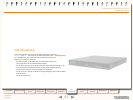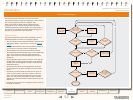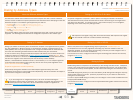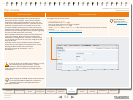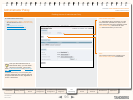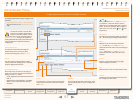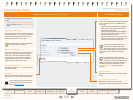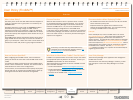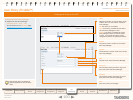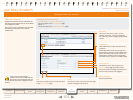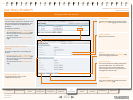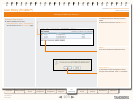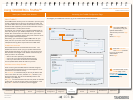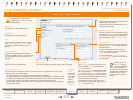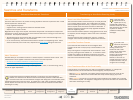
99
D14049.03
MAY 2008
Grey Headline (continued)
TANDBERG VIDEO COMMUNICATIONS SERVER
ADMINISTRATOR GUIDE
Introduction Getting Started
Overview and
Status
System
Conguration
VCS
Conguration
Zones and
Neighbors
Call
Processing
Bandwidth
Control
Firewall
Traversal
Maintenance Appendices
User Policy (FindMe™)
What is User Policy?
User Policy is the set of rules that determines what happens to
a call for a particular user or group when it is received by the
TANDBERG VCS.
The VCS’s User Policy is also known as TANDBERG FindMe™.
This feature lets you assign a single “FindMe” name to
individuals or groups in your enterprise. Users can determine
which devices will be called when their FindMe name is dialled,
and can also specify what happens if those devices are busy or
go unanswered.
The FindMe feature means that potential callers can be given a
single FindMe Alias on which they can contact an individual or
group in your enterprise - callers won’t have to know details of all
the devices on which that person or group might be available.
Overview
Who Must do What Before FindMe™ Can Be Used?
FindMe™ is an optional feature on the VCS, and you must install
the appropriate option key before it can be used. Contact your
TANDBERG representative for more information.
The following steps are required for the use of FindMe once the
option has been installed:
The VCS administrator 1. enables and congures User Policy.
The VCS administrator 2. creates a user account for each user
or group who require a FindMe name.
The owner of the FindMe name 3. congures their account
settings.
Process Overview
When the VCS receives a call for a particular alias, it checks
to see whether User Policy has been enabled. If so, the VCS
queries the User Policy Manager to see whether that alias is
listed as a FindMe name. If so, the call is forwarded to the
aliases according to conguration for that FindMe alias.
If User Policy has not been enabled, or the alias is not present in
the User Policy Manager, the VCS will continue to search for the
alias in the usual manner, i.e. rst locally and then sending the
request out to neighbors.
User Policy Manager
The User Policy Manager is the application that manages the
FindMe user accounts.
The VCS has its own User Policy Manager. However, you also
have the option to use a User Policy Manager on a remote
system.
How are Devices Specied?
When conguring their FindMe account, users are asked to
specify the devices to which calls to their FindMe name will be
routed.
It is possible to specify aliases and even other FindMe names
as one or more of the devices. However, care must be taken in
these situations to avoid circular congurations.
For this reason, we recommend that users specify the physical
devices they wish to ring when their FindMe name is called, by
entering the alias with which that device has registered.
User Policy is invoked after any Administrator Policy
congured on the VCS has been applied. See the Call
Processing Diagram for more information.
Recommendations When Deploying FindMe
The FindMe name should be in the form of a URI, and should
•
be the individual’s primary URI.
Endpoints should not register with an alias that is the
•
same as an existing FindMe name. You can prevent this by
including all FindMe names on the Deny List.
Example
Users at Example Corp. have a FindMe name in the format
john.smith@example.com. Each of the user’s endpoints are
registered with a slightly different alias that identies its
physical location. For example their ofce endpoint is registered
with an alias in the format john.smith.ofce@example.com and
their home endpoint as john.smith.home@example.com. Both of
these endpoints are included in the list of devices to ring when
the FindMe name is dialed. The alias john.smith@example.
com is added to the Deny List, to prevent an individual endpoint
registering with that alias.



